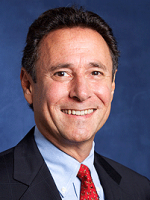Once again, the percentage of private sector union-represented workers fell – to 6.4% in 2018, from 6.5% in 2017, according to the Bureau of Labor Statistics of the U.S. Department of Labor.
Highlights from the “Union Members – 2018” report include:
-
Men had a higher union representation rate than women (11.1% to 9.9%).
-
Black employees were more likely to be union members than Caucasian, Asian or Hispanic employees.
-
Older workers were unionized at a higher rate: 12.8% of workers ages 45 to 54 and 13.3% of those ages 55 to 64 were represented by unions.
-
While nonunion workers’ median weekly earnings were less than those of unionized employees ($860 per week versus $1051 per week), this comparison does “not control for many factors that can be important in explaining earnings differences,” such as “variations in the distributions of union members and nonunion employees by occupation, industry, age, firm size, or geographic region.” (For example, unionized employees tend to be older and younger employees tend to earn less.)
-
The higher median weekly earnings for unionized employees does not apply to all occupations, however; median weekly earnings for a number of professional and management occupations such as those in business and financial operations and computer and mathematical occupations were higher among non-union employees than for union employees.
-
Hawaii and New York had the highest union membership rates (23.1% and 22.3% respectively), while North Carolina and South Carolina had the lowest (2.7% each).
-
In the private sector, utilities (20.1%), transportation and warehousing (16.7%), and telecommunications (15.4%) were the industries with the highest unionization rates. Finance (1.3%), food services and drinking places (1.3%), and professional and technical services (1.5%) were among the lowest.
-
The highest unionization rates in 2018 were in protective service occupations (33.9%) and in education, training, and library occupations (33.8%). Unionization rates were lowest in farming, fishing, and forestry occupations (2.4%); sales and related occupations (3.3%); computer and mathematical occupations (3.7% ); and in food preparation and serving related occupations (3.9% ).
-
California (2.4 million) and New York (1.9 million) had the largest number of unionized employees.
The 2018 BLS data on the rate of union membership reflect nothing more than the status quo – a tiny fraction of American workers in the private sector, and a minority overall, have chosen to become members of a union. Nevertheless, both unionized and union-free employers should be aware of local, industry, occupation, and other union membership trends.






 />i
/>i